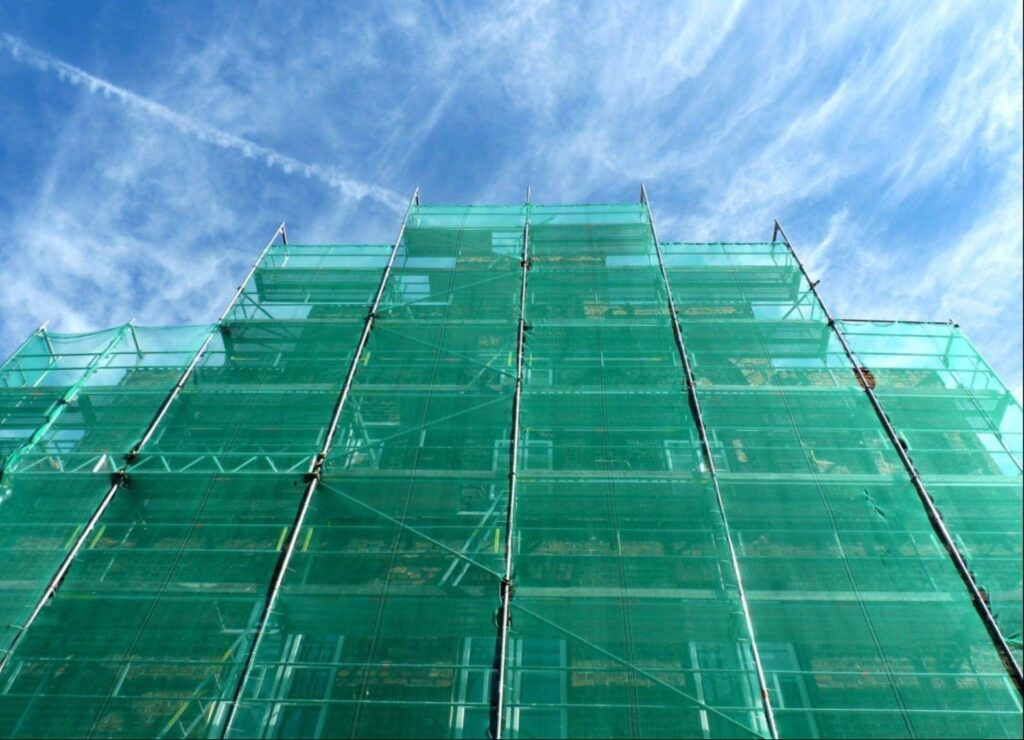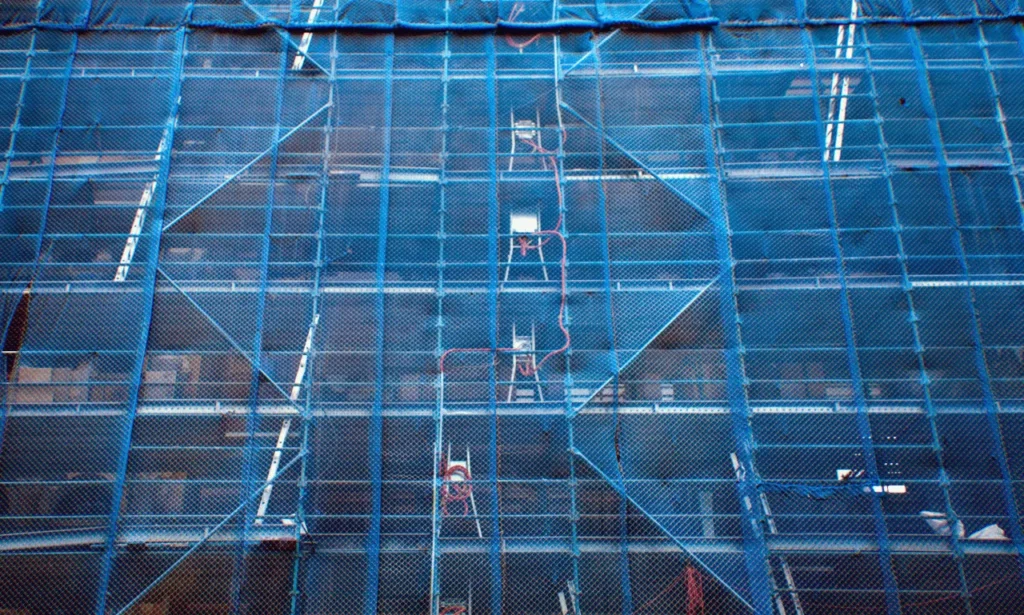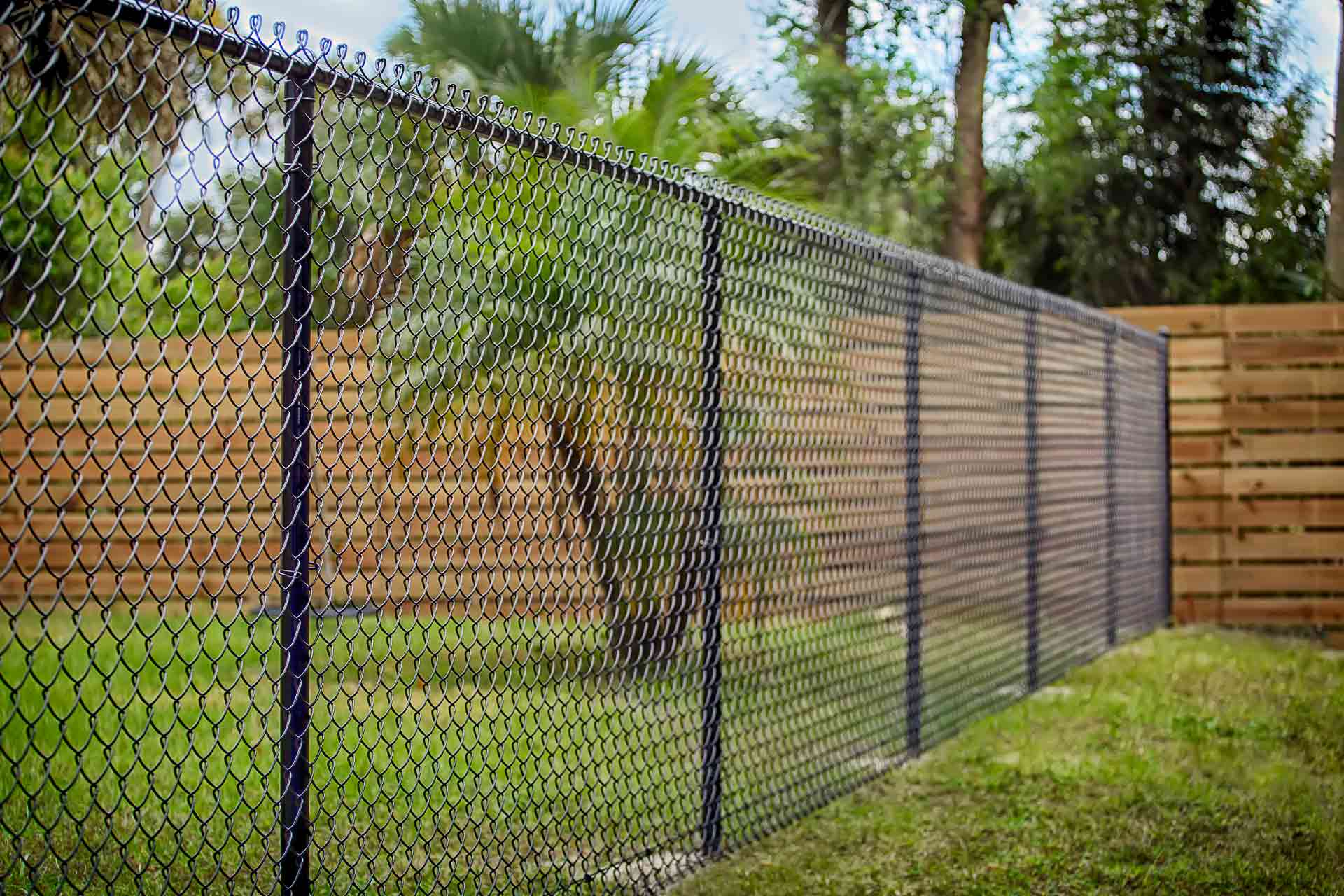In the construction industry, safety is paramount. One of the most significant hazards on construction sites is the risk of debris falling from heights, which can cause serious injuries or even fatalities. To mitigate these risks, scaffolding mesh has emerged as a vital component in ensuring the safety of workers and passers-by alike. This article delves into the importance of scaffolding mesh, its benefits, and how it effectively prevents debris hazards on-site.
The Role of Scaffolding Mesh in Construction Safety
Scaffolding mesh serves as a protective barrier that encapsulates scaffolding structures, providing a safeguard against falling objects. Its primary function is to prevent debris, tools, and materials from inadvertently dropping onto individuals below. This is particularly crucial in urban environments where construction sites are often adjacent to pedestrian walkways and public spaces.

Understanding Debris Hazards
Debris hazards can arise from various activities on a construction site, including demolition, renovation, and new builds. Loose materials, tools, and equipment can easily become dislodged during these processes. Without proper precautions, these items pose a significant risk to the safety of workers and the general public.
The consequences of debris hazards can be severe. Injuries may range from minor bruises to life-threatening conditions, leading to legal ramifications for construction companies. Therefore, implementing effective safety measures is not just a regulatory requirement; it is a moral obligation to protect everyone involved.
How Scaffolding Mesh Works
Scaffolding mesh is typically made from durable materials such as polyethylene or polypropylene, designed to withstand harsh weather conditions and the rigours of construction work. The mesh is installed around scaffolding structures, creating a physical barrier that captures falling debris.
Moreover, the mesh is often designed with a fine weave, which ensures that even small items, such as screws and nails, are contained. This feature is particularly beneficial in preventing injuries caused by smaller debris that might otherwise go unnoticed.
In addition to its protective qualities, scaffolding mesh also plays a role in enhancing visibility on construction sites. Many types of mesh come in bright colours or are printed with safety warnings, making them easily identifiable. This visual cue can alert both workers and pedestrians to the presence of a construction zone, thereby reducing the likelihood of accidents. Furthermore, the use of scaffolding mesh can contribute to a more organised work environment by keeping tools and materials contained, thus minimising clutter and potential trip hazards. learn more about hazards at https://www.who.int/tools/occupational-hazards-in-health-sector
Another significant aspect of scaffolding mesh is its contribution to environmental protection. During construction, dust and debris can be released into the air, potentially affecting air quality and the surrounding ecosystem. By utilising scaffolding mesh, construction companies can mitigate these effects by capturing airborne particles and preventing them from dispersing into the environment. This not only helps in maintaining compliance with environmental regulations but also demonstrates a commitment to sustainable building practices, ultimately fostering goodwill within the community.

Benefits of Using Scaffolding Mesh
The advantages of using scaffolding mesh extend beyond merely preventing debris hazards. Here are some key benefits that highlight its importance in construction safety:
Enhanced Worker Safety
By installing scaffolding mesh, construction companies can significantly enhance the safety of their workers. The mesh acts as a protective shield, reducing the likelihood of accidents caused by falling objects. This not only protects those working on-site but also instils a sense of security among the workforce, leading to improved morale and productivity. Furthermore, the visibility provided by scaffolding mesh allows workers to maintain awareness of their surroundings, which is crucial in busy construction environments where multiple activities occur simultaneously. The added layer of protection can also encourage workers to focus more on their tasks rather than worrying about potential hazards from above.
Compliance with Regulations
In Australia, construction sites are subject to strict safety regulations and standards. The use of scaffolding mesh helps companies comply with these legal requirements, thereby avoiding potential fines and legal issues. Regulatory bodies often mandate safety measures to protect workers and the public, and scaffolding mesh is a widely accepted solution. Additionally, adhering to these regulations not only fosters a safer working environment but also enhances a company’s reputation within the industry. Companies that prioritise compliance are often viewed more favourably by clients and stakeholders, which can lead to increased business opportunities and partnerships.
Cost-Effectiveness
While some may view scaffolding mesh as an additional expense, it is, in fact, a cost-effective investment in the long run. The costs associated with workplace injuries, legal disputes, and project delays can far exceed the initial outlay for scaffolding mesh. By prioritising safety measures, companies can save money and maintain their reputation in the industry. Moreover, the durability and longevity of high-quality scaffolding mesh mean that it can withstand harsh weather conditions and heavy usage, reducing the need for frequent replacements. This resilience not only contributes to lower long-term costs but also ensures that projects can continue without unnecessary interruptions, ultimately leading to timely completion and satisfied clients. To learn more about harsh click here.
Types of Scaffolding Mesh
There are various types of scaffolding mesh available, each designed for specific applications and environments. Understanding the different options can help construction companies choose the most suitable type for their projects.
Standard Scaffolding Mesh
Standard scaffolding mesh is the most commonly used type, providing a basic level of protection against falling debris. It is typically made from lightweight materials, making it easy to handle and install. This type of mesh is ideal for general construction projects where the risk of debris is moderate. In addition to its protective qualities, standard scaffolding mesh often features a fine weave that allows for visibility and light penetration, which can be advantageous for workers needing to see their surroundings clearly while on-site. Moreover, its affordability makes it a popular choice among contractors looking to balance safety and budget considerations.
Heavy-Duty Scaffolding Mesh
For projects that involve heavier materials or more significant risks, heavy-duty scaffolding mesh is recommended. This type is constructed from thicker, more robust materials, ensuring greater durability and resistance to wear and tear. Heavy-duty mesh is particularly useful in industrial settings or during demolition work. Its design often includes reinforced edges and additional fastening points, which help to secure the mesh firmly in place, reducing the likelihood of accidental detachment. Furthermore, heavy-duty mesh can also be treated with anti-corrosive coatings, enhancing its longevity in harsh environments where exposure to chemicals or moisture is a concern.
Wind-Resistant Scaffolding Mesh
In areas prone to high winds, wind-resistant scaffolding mesh is essential. This type of mesh is designed to withstand strong gusts, preventing it from becoming dislodged or damaged. It also helps to mitigate the risk of debris being blown off the scaffolding, further enhancing safety on-site. The mesh is often constructed with a unique pattern that allows wind to pass through while maintaining its structural integrity, which is crucial for ensuring that the scaffolding remains stable during adverse weather conditions. Additionally, wind-resistant scaffolding mesh can be beneficial in reducing noise pollution on construction sites, as it can help to dampen sound levels, creating a more pleasant working environment for both workers and nearby residents.
Installation and Maintenance of Scaffolding Mesh
Proper installation and maintenance of scaffolding mesh are crucial to ensuring its effectiveness. Here are some key considerations for construction companies:
Installation Guidelines
When installing scaffolding mesh, it is vital to follow manufacturer guidelines and industry best practices. The mesh should be securely fastened to the scaffolding structure, with no gaps that could allow debris to escape. Regular inspections during the installation process can help identify any potential issues before they become significant problems.
Regular Maintenance Checks
Once installed, scaffolding mesh should undergo regular maintenance checks to ensure its continued effectiveness. Inspecting the mesh for signs of wear and tear, such as fraying or tears, is essential. Any damaged sections should be promptly repaired or replaced to maintain the integrity of the safety barrier.
Training for Workers
It is also crucial to train workers on the importance of scaffolding mesh and how to maintain it properly. This training should cover the correct installation techniques, inspection procedures, and the significance of reporting any damage. Empowering workers with this knowledge can foster a culture of safety on-site.
Case Studies: Successful Implementation of Scaffolding Mesh
Numerous construction companies have successfully implemented scaffolding mesh to enhance safety on their sites. Here are a few case studies that highlight the effectiveness of this safety measure:
Case Study 1: Urban High-Rise Development
In a recent urban high-rise development project, scaffolding mesh was installed around the scaffolding structures to protect pedestrians on the busy streets below. The project manager reported a significant reduction in near-miss incidents involving falling debris, leading to increased confidence among workers and the surrounding community.
Case Study 2: Industrial Renovation
During an industrial renovation project, heavy-duty scaffolding mesh was utilised to contain debris from demolition activities. The project faced challenges due to the nature of the work, but the mesh effectively prevented falling materials from posing a risk to workers and nearby facilities. The successful implementation of the mesh contributed to the project being completed ahead of schedule.
Case Study 3: Bridge Maintenance
A bridge maintenance project required the use of wind-resistant scaffolding mesh due to the elevated location and exposure to strong winds. The mesh not only protected workers from falling debris but also prevented materials from being blown off the scaffolding. This proactive approach to safety resulted in zero incidents during the project.
Conclusion
Scaffolding mesh is an essential component of construction safety, providing a reliable solution to prevent debris hazards on-site. Its ability to enhance worker safety, ensure compliance with regulations, and offer cost-effective benefits makes it a vital investment for construction companies. By understanding the different types of scaffolding mesh and adhering to proper installation and maintenance practices, companies can significantly reduce the risks associated with debris hazards.
As the construction industry continues to evolve, prioritising safety measures like scaffolding mesh will remain crucial. Embracing these protective solutions not only safeguards workers and the public but also contributes to a culture of safety and responsibility within the industry. Ultimately, investing in scaffolding mesh is an investment in the future of construction safety.
Learn more on: Mesh Fencing Which Type Works Best for Temporary Builds



